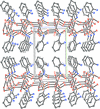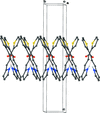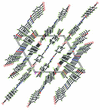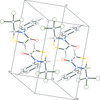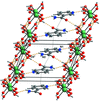issue contents
October 2018 issue

Cover illustration: Organically templated zinc phosphites (ZnPOs) are a class of hybrid materials comprising negatively charged, polyhedral building units and organic cations (often protonated amines). Their structure consists of an inorganic open framework with different Zn:P ratios, connected to the organic moieties either via N-H O hydrogen bonds or through direct Zn-N bonds (templating effect or ligand behaviour of the organic cation, respectively). Besides their rich structural diversities, these organic-inorganic compounds have been attracting attention for their potential applications in catalysis, separation and as functional materials. See: Holmes, Cordes, Slawin & Harrison [Acta Cryst. (2018). E74, 1411-1416].
O hydrogen bonds or through direct Zn-N bonds (templating effect or ligand behaviour of the organic cation, respectively). Besides their rich structural diversities, these organic-inorganic compounds have been attracting attention for their potential applications in catalysis, separation and as functional materials. See: Holmes, Cordes, Slawin & Harrison [Acta Cryst. (2018). E74, 1411-1416].
research communications


































































 journal menu
journal menu
















